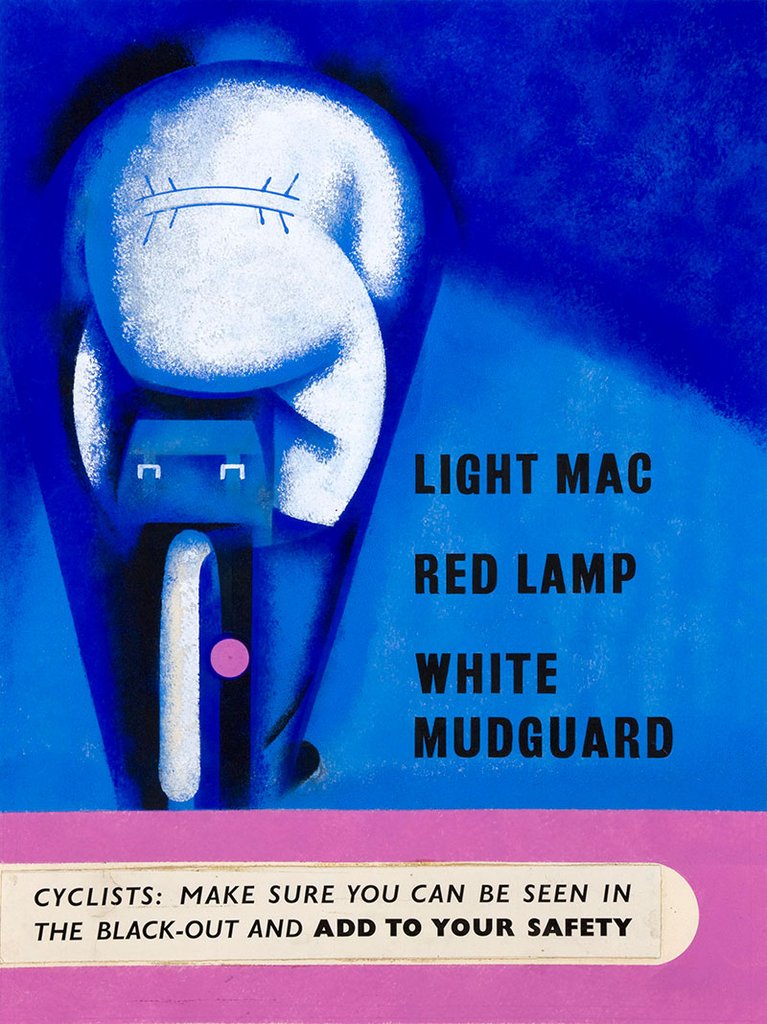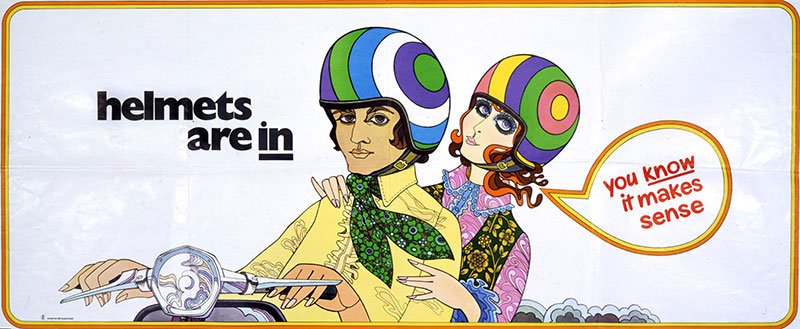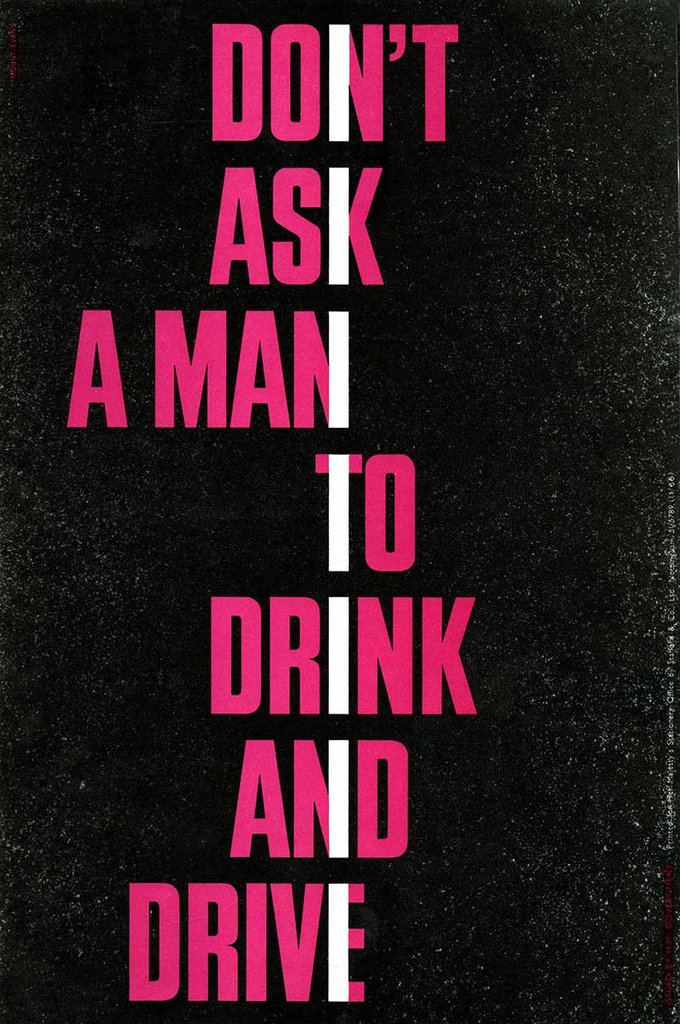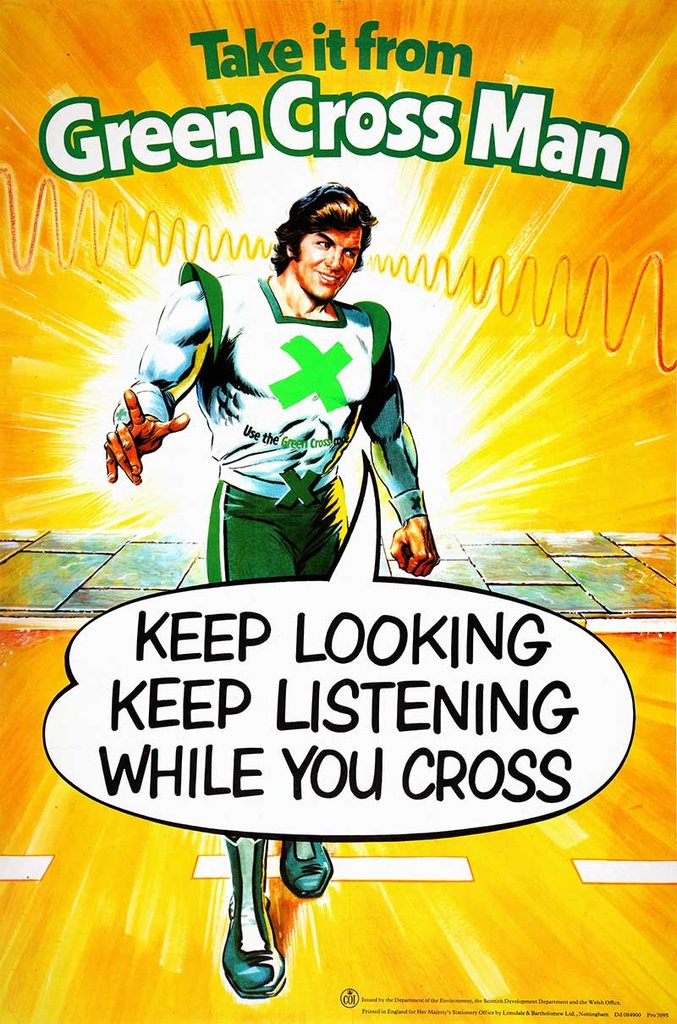Road safety campaigns
Government has often played a role in advising citizens how to travel safely and responsibly by road. Our records include leaflets and posters used to promote different aspects of road safety, often in a surprisingly artistic way.
Poster showing cyclists how to be seen in a blackout
Date: 1939–1945
Catalogue reference: View the record N/A in the catalogue
This poster shows a cyclist on their bike, pedalling away into the dark of the blackout during the Second World War. The poster advises cyclists to wear a light-coloured mac (outer coat), have a red rear light and to paint their mudguard white.
Blackout restrictions were imposed to prevent light from the ground helping enemy aircraft to find their targets during bombing raids. People had to cover their windows with heavy curtains so that at night their lights couldn't be seen. Outside, street lights were dimmed and the light was deflected downwards.
Car headlights had special covers fitted to make their lights shine down through small slits. Travelling by foot or by road during blackouts was dangerous because it was hard to see obstacles, pedestrians or other traffic, and accidents were common.

'Helmets are in' poster
Date: 1960
Catalogue reference: View the record N/A in the catalogue
This poster shows two young people on a moped, declaring that wearing helmets is 'in'. The poster is undated, but the clothes worn by the couple are typical of the late 1960s. Wearing helmets on a motorcycle didn't become law in the UK until 1973. Public opinion was divided, with many feeling the decision to wear a helmet should be a personal choice rather than a legal obligation.
This poster appears to be an attempt to persuade young people to voluntarily change their behaviour in the years before the legislation was introduced. It uses the language of fashion by claiming that wearing helmets is ‘in’ and so implies it is the ‘cool’ thing to do.

'Don’t ask a man to drink and drive' poster
Date: 1966
Catalogue reference: View the record N/A in the catalogue
The 1967 Road Safety Act first introduced a legal blood alcohol limit for drivers. Before this, there was no legal limit on the amount drivers could drink.
The government campaign was aimed at changing widely held views that drinking and driving was acceptable. This poster is aimed specifically at men, perhaps to challenge those who might put pressure on male friends to carry on drinking even when they were planning to drive a vehicle.
The poster weaves its bold text across the white lines in the centre of the page, mimicking the way a car can weave across the white lines in the middle of the road when the driver is affected by alcohol.

Green Cross Man poster
Date: Around 1970
Catalogue reference: View the record N/A in the catalogue
This poster shows the Green Cross Man - a superhero character created to help teach young children how to cross roads safely.
The government's Central Office of Information ran poster and television advertising campaigns promoting the Green Cross Code. This was a six-step process for children to follow that advised them to find a safe place to cross and to look and listen for cars.
In the TV advertisements, the Green Cross Man was played by Dave Prowse who also played Darth Vader in Star Wars. Other seventies celebrities such as footballer Kevin Keegan, singer Alvin Stardust and boxer Joe Bugner were used to promote the Green Cross Code.
